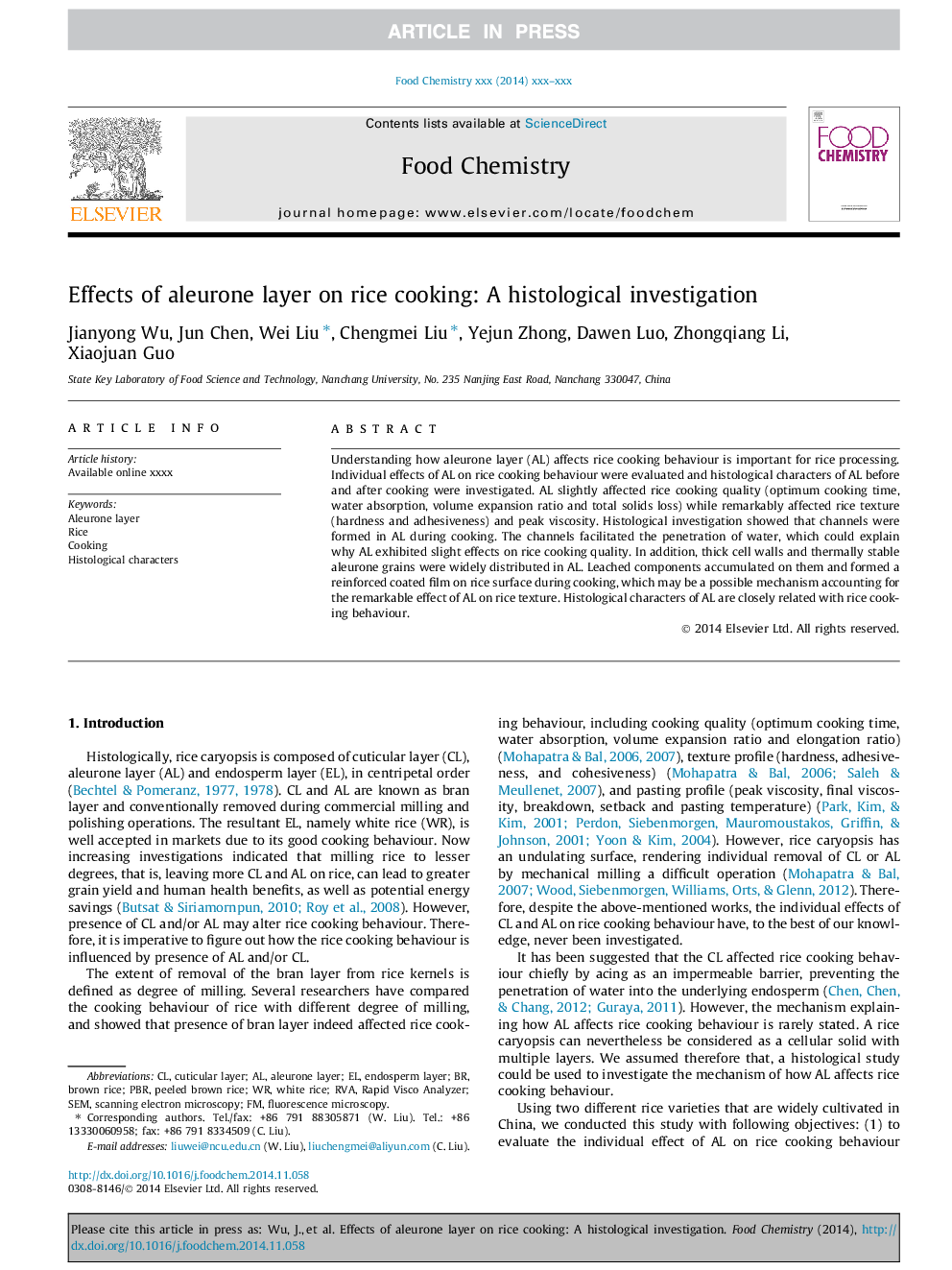| Article ID | Journal | Published Year | Pages | File Type |
|---|---|---|---|---|
| 7589978 | Food Chemistry | 2016 | 8 Pages |
Abstract
Understanding how aleurone layer (AL) affects rice cooking behaviour is important for rice processing. Individual effects of AL on rice cooking behaviour were evaluated and histological characters of AL before and after cooking were investigated. AL slightly affected rice cooking quality (optimum cooking time, water absorption, volume expansion ratio and total solids loss) while remarkably affected rice texture (hardness and adhesiveness) and peak viscosity. Histological investigation showed that channels were formed in AL during cooking. The channels facilitated the penetration of water, which could explain why AL exhibited slight effects on rice cooking quality. In addition, thick cell walls and thermally stable aleurone grains were widely distributed in AL. Leached components accumulated on them and formed a reinforced coated film on rice surface during cooking, which may be a possible mechanism accounting for the remarkable effect of AL on rice texture. Histological characters of AL are closely related with rice cooking behaviour.
Keywords
Related Topics
Physical Sciences and Engineering
Chemistry
Analytical Chemistry
Authors
Jianyong Wu, Jun Chen, Wei Liu, Chengmei Liu, Yejun Zhong, Dawen Luo, Zhongqiang Li, Xiaojuan Guo,
